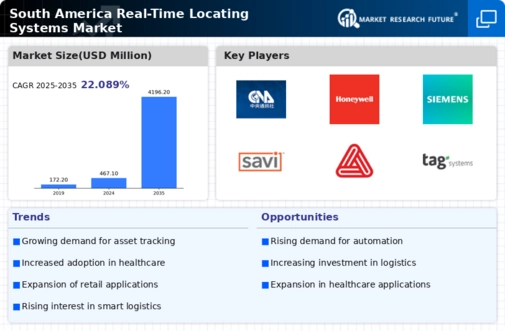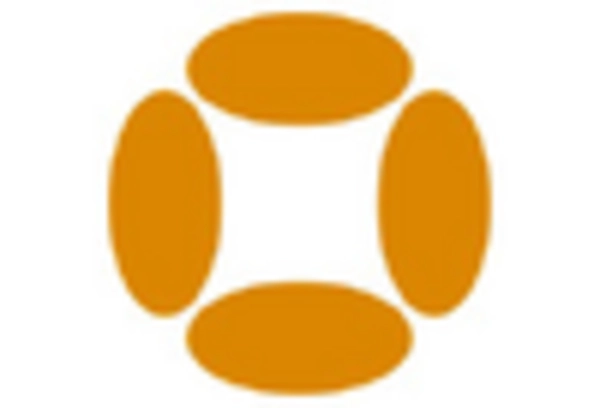Integration with IoT Solutions
The integration of real time-locating-systems with Internet of Things (IoT) solutions is emerging as a key driver in South America. As IoT devices proliferate, the synergy between RTLS and IoT technologies enhances data collection and analysis capabilities. This integration allows for real-time monitoring and management of assets, leading to improved decision-making processes. The real time-locating-systems market is likely to benefit from this trend, as businesses seek to leverage IoT for operational efficiency. By 2025, the market is anticipated to grow by 18%, driven by the increasing adoption of IoT-enabled RTLS solutions across various sectors, including healthcare and logistics.
Growing Interest in Smart Cities
The real time-locating-systems market in South America is witnessing growth due to the increasing interest in smart city initiatives. Governments and municipalities are exploring RTLS technologies to improve urban management and enhance public services. By implementing RTLS, cities can optimize traffic flow, monitor public transportation, and manage resources more effectively. This trend is expected to drive market growth by approximately 15% over the next few years, as urban areas seek to leverage technology for better service delivery. The integration of RTLS in smart city projects is likely to play a crucial role in shaping the future of urban living in South America.
Rising Demand for Asset Management
The real time-locating-systems market in South America is significantly driven by the increasing need for effective asset management. Companies are recognizing the importance of tracking high-value assets to minimize losses and enhance operational efficiency. Industries such as retail, manufacturing, and logistics are particularly focused on implementing RTLS solutions to monitor inventory levels and asset locations in real-time. This trend is expected to contribute to a market growth of approximately 20% by 2026. The ability to reduce asset misplacement and improve inventory accuracy is becoming a critical factor for businesses, thereby propelling the demand for RTLS technologies in the region.
Technological Advancements in RTLS
The real time-locating-systems market in South America is experiencing a surge due to rapid technological advancements. Innovations in wireless communication technologies, such as Bluetooth Low Energy (BLE) and Ultra-Wideband (UWB), are enhancing the accuracy and efficiency of RTLS solutions. These technologies enable precise tracking of assets and personnel, which is crucial for industries like manufacturing and healthcare. As organizations seek to optimize operations, the demand for advanced RTLS solutions is likely to increase. In 2025, the market is projected to reach approximately $1.5 billion, reflecting a compound annual growth rate (CAGR) of around 15%. This growth indicates a strong inclination towards integrating sophisticated RTLS technologies across various sectors in South America.
Focus on Enhanced Security Measures
In South America, the real time-locating-systems market is being propelled by a heightened focus on security measures. Organizations are increasingly adopting RTLS technologies to enhance safety protocols, particularly in sectors such as healthcare and education. The ability to track individuals and assets in real-time contributes to improved security and emergency response capabilities. This trend is likely to result in a market growth of around 12% by 2026, as businesses prioritize the implementation of RTLS solutions to mitigate risks and ensure compliance with safety regulations. Enhanced security measures are becoming a fundamental aspect of operational strategies in the region.


















Leave a Comment